Test for Colour Blindness
The images below are part of the "Ishihara Colour Vision Test" , developed by Dr. Shinobu Ishihara.
All sighted people should see the number 12 in the first circle. People with normal colour perception should see the numbers 2, 5, 6, 7 in the following four circles.
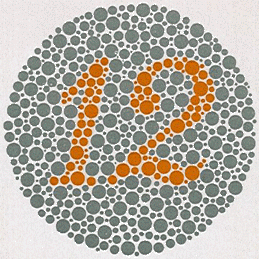
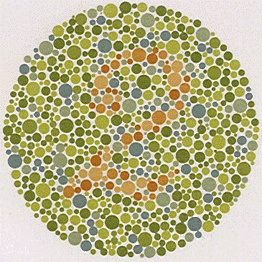
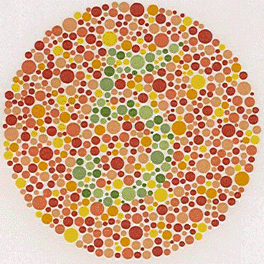
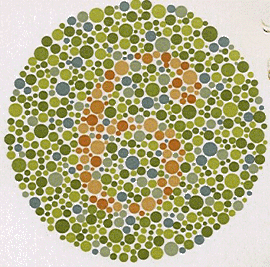
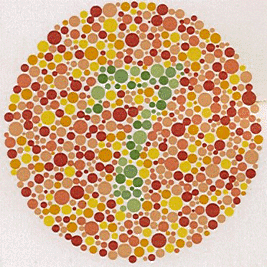
More About Colour Perception
There are two types of vision sensors in the human eye: Rods (which see black and white) and cones (which see colour).
Rods are more sensitive than cones, which is why we don't see colours well in the dark.
There are three types of cone: Red, green and blue. If a person has a lack of one or more type of cone, or if the cones are defective, colour perception will be affected.
"Colour Blindness" is not an accurate term, as most people can still perceive colours - just to a lesser extent. "Colour Vision Deficiency" is a more accurate description.
Most colour perception defects are for red or green or both. Yellow-blue defects can also occur, but very rarely. Complete absence of colour perception (i.e. black and white vision) is extremely rare.
Colour vision deficiency affects about 10% of males and less than 1% of females. The most common cause is hereditary.